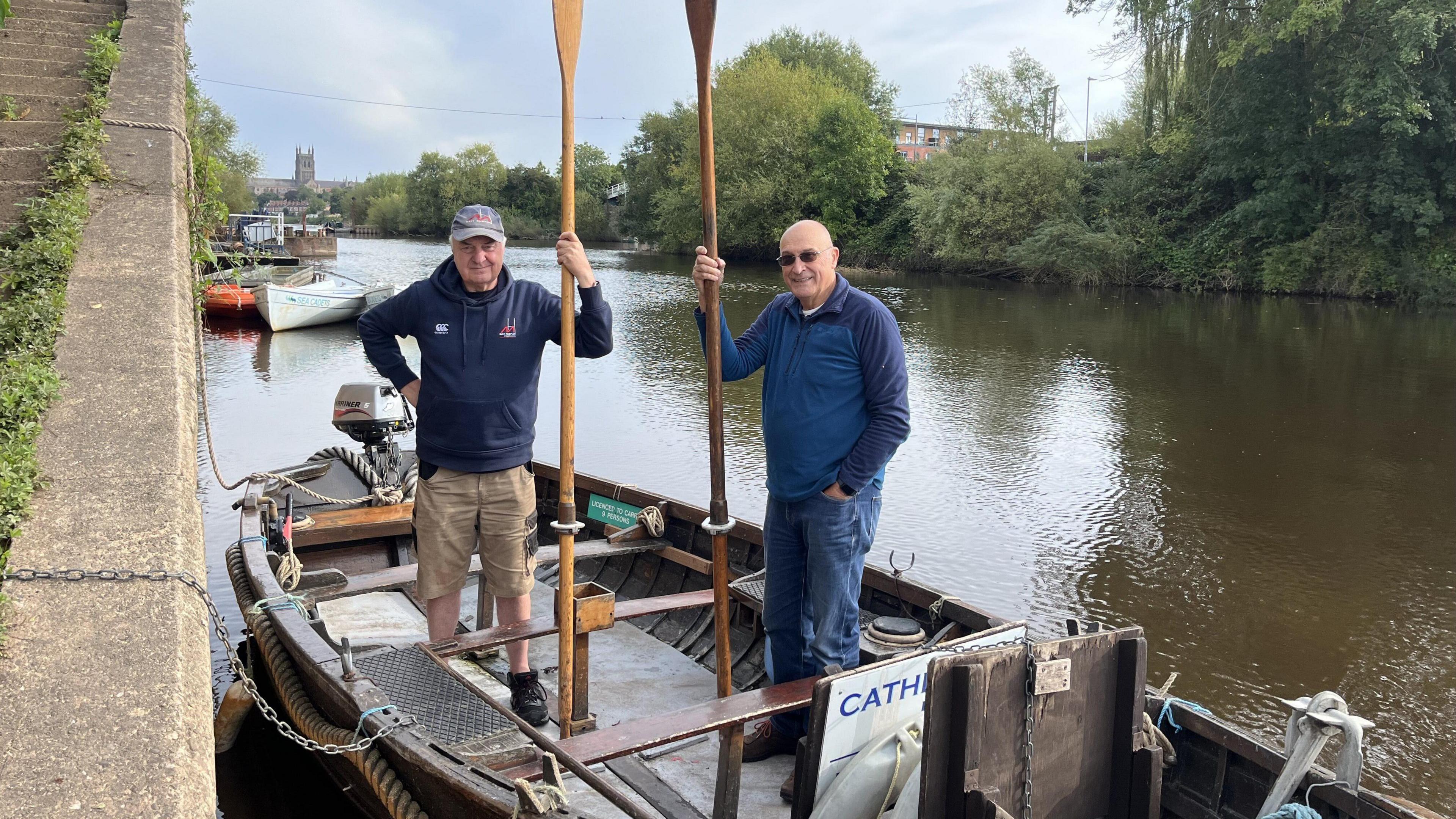Archaeological dig uncovers cathedral's history
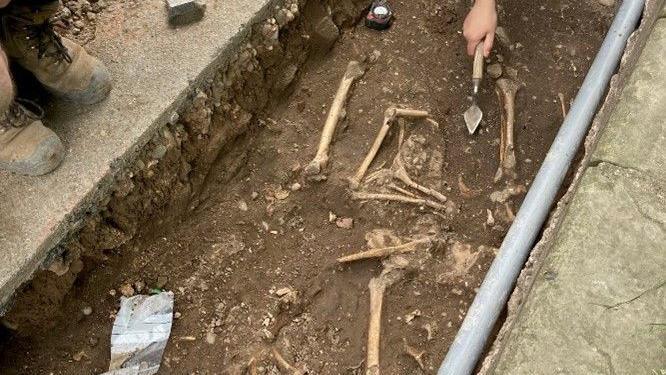
Pre-Victorian skeletons were discovered during the excavation
- Published
An archaeological dig at a former burial ground has unearthed pre-Victorian skeletons, a Roman cobbled surface as well as more clues to the city's history.
The excavation at Worcester Cathedral's College Yard also found remnants of a medieval bell tower, 2,000-year-old window glass and the buried walls of a 12th Century crypt.
Worcester Cathedral’s archaeologist, Fiona Keith-Lucas said artefacts are yet to be analysed.
She expected the findings to be shared by next summer.
The dig was undertaken by Worcestershire Archaeology ahead of works to transform the yard into a green space - which are set to begin on Monday.
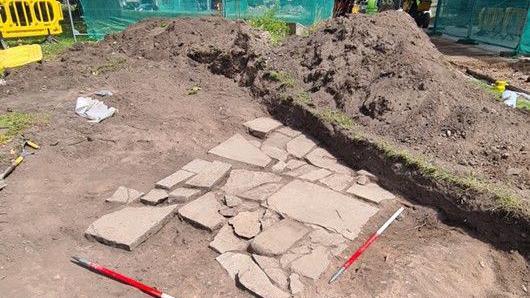
The findings from the dig will be analysed and shared in summer 2025
The College Yard, to the north of the cathedral, was the city's burial ground for 750 years until the 19th century.
The dig took place ahead of the cathedral's landscaping project to avoid disruption, said Ms Keith-Lucas.
"Because we know the area is so rich in archaeology, we have been doing the work largely in advance of the main contract so things will move smoothly on site and not be held up."
During the dig more than one type of quern stone for grinding flour was discovered, alongside the neck of a blue glass perfume bottle and a decorative stamp made from a sheep bone.
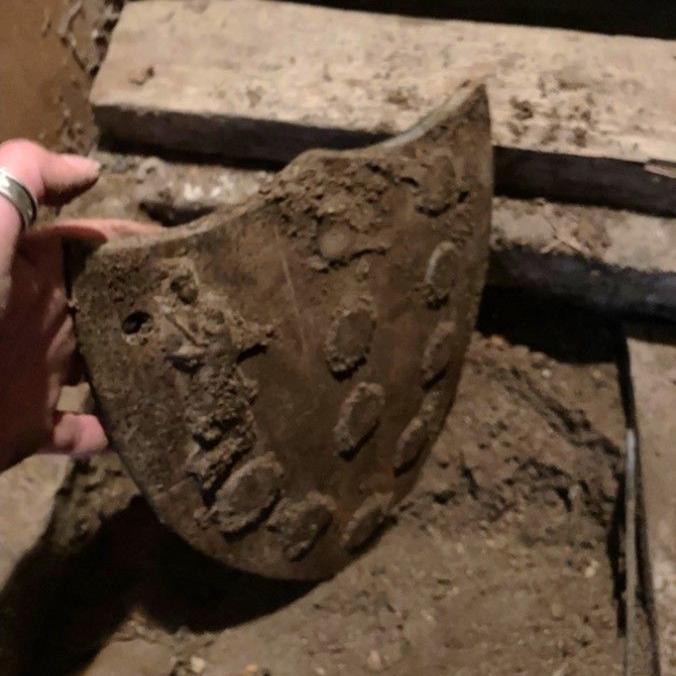
Broken pottery pieces were found in a cobbled Roman surface
The cobbles also contained broken pottery, which experts will use to help date the surface. Structural remains dating back to the Norman era were also found, as well as the buried walls of a demolished lodge.
The team also found "significant quantities" of 14th to 16th Century window glass, blacksmith waste and a pit of ochre, all within a building footprint that had been burnt down.
Work to create the green space will continue into the new year, with a longer-term aim to create a pedestrianised route all the way around the building, said a spokesperson for the cathedral.
The first phase is set to be complete by March 2025.
Get in touch
Tell us which stories we should cover in Hereford & Worcester
Follow BBC Hereford & Worcester on BBC Sounds, Facebook, external, X, external and Instagram, external.
Related topics
- Published5 April 2024
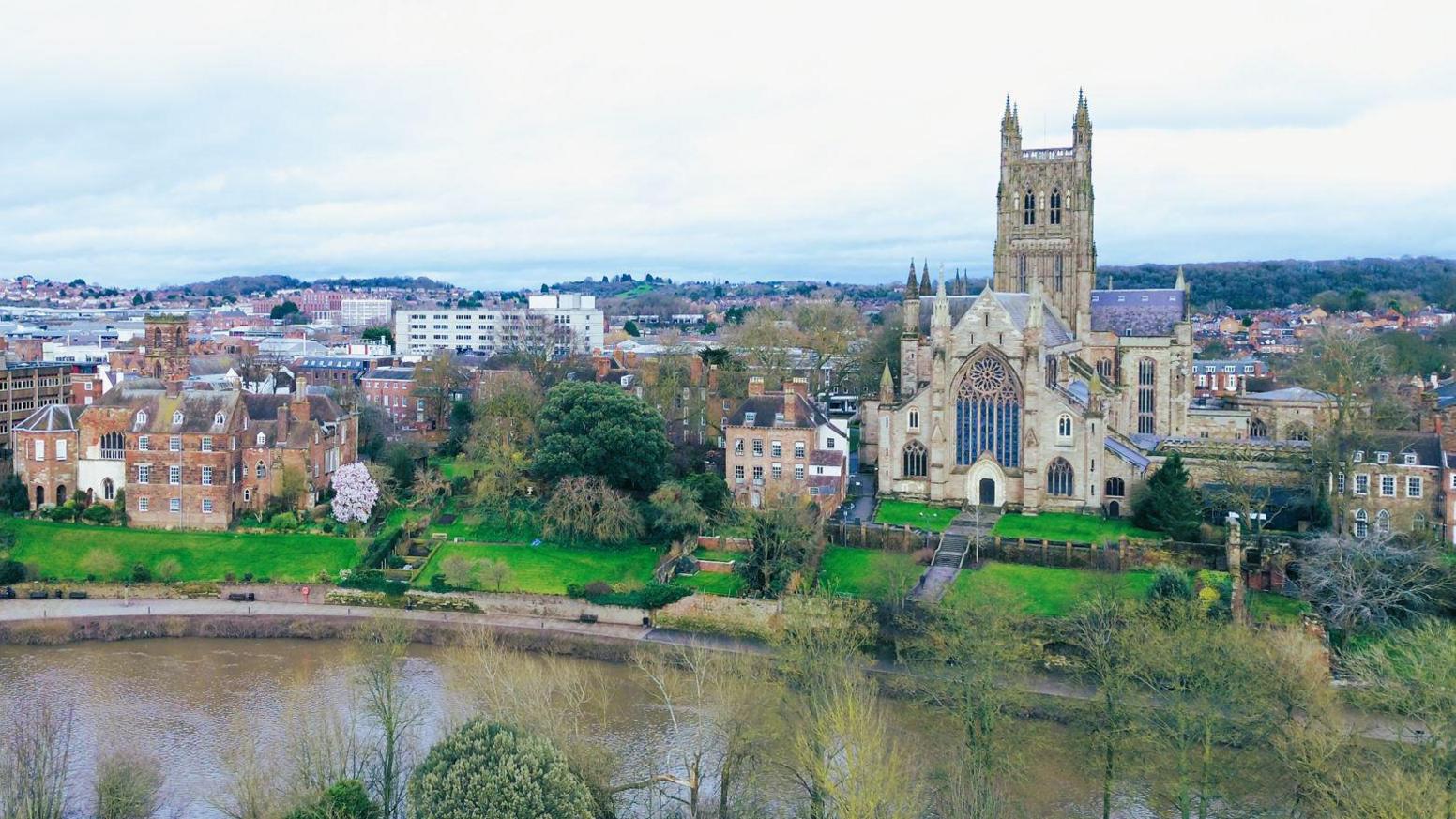
- Published9 September 2024
